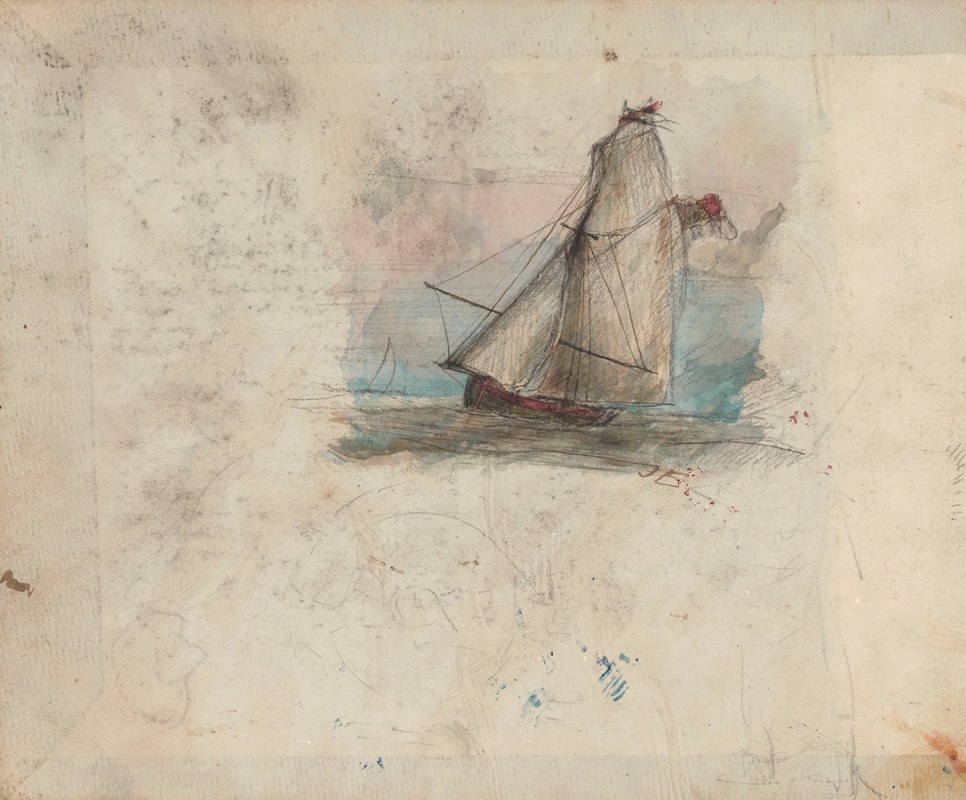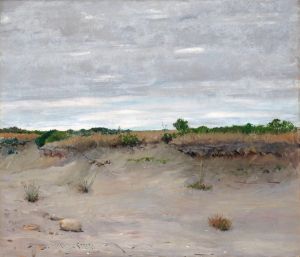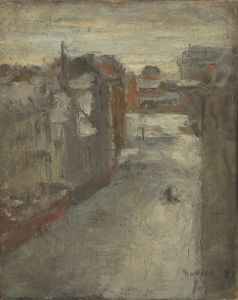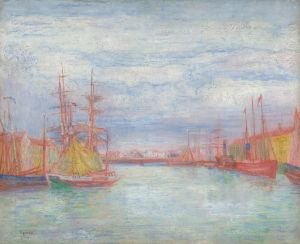
Sailingboat
A hand-painted replica of James Ensor’s masterpiece Sailingboat, meticulously crafted by professional artists to capture the true essence of the original. Each piece is created with museum-quality canvas and rare mineral pigments, carefully painted by experienced artists with delicate brushstrokes and rich, layered colors to perfectly recreate the texture of the original artwork. Unlike machine-printed reproductions, this hand-painted version brings the painting to life, infused with the artist’s emotions and skill in every stroke. Whether for personal collection or home decoration, it instantly elevates the artistic atmosphere of any space.
James Ensor, a prominent Belgian painter and printmaker, is known for his unique and often surreal style that blends elements of symbolism and expressionism. While Ensor is widely recognized for his works featuring masks, skeletons, and carnival scenes, he also explored other subjects, including landscapes and seascapes. One such work attributed to Ensor is "Sailingboat."
"Sailingboat" by James Ensor captures a serene maritime scene, showcasing Ensor's versatility as an artist. Although Ensor is primarily celebrated for his more fantastical and grotesque imagery, this painting reflects his ability to depict the natural world with a sense of tranquility and subtlety. The painting features a sailing boat navigating the waters, possibly off the coast of Ostend, a city in Belgium where Ensor spent much of his life and which frequently inspired his work.
Ensor's use of color and light in "Sailingboat" demonstrates his keen observational skills and his ability to convey atmosphere. The palette is likely to be composed of soft blues, whites, and perhaps hints of other colors to capture the reflections and movement of the water. The sky and sea are rendered in a way that suggests a calm day, with gentle winds propelling the boat forward. This contrasts with the more chaotic and vibrant compositions found in many of his other works.
The composition of "Sailingboat" is likely straightforward, focusing on the boat as the central subject. Ensor's brushwork, which can range from delicate and precise to bold and expressive, would contribute to the overall mood of the painting. The simplicity of the scene allows viewers to appreciate the nuances of Ensor's technique and his ability to evoke a sense of place.
James Ensor's artistic career spanned the late 19th and early 20th centuries, a period marked by significant changes in art movements and styles. While he was associated with the avant-garde group Les XX, Ensor's work often defied easy categorization. His exploration of different themes and styles, as seen in "Sailingboat," highlights his innovative spirit and his willingness to experiment beyond the boundaries of traditional art.
"Sailingboat" serves as a testament to Ensor's diverse artistic interests and his capacity to capture the beauty of the natural world. It provides insight into a lesser-known aspect of his oeuvre, offering a glimpse into his ability to find inspiration in the everyday scenes around him. This painting, like many of Ensor's works, reflects his deep connection to his surroundings and his unique perspective on the world.
While "Sailingboat" may not be as widely recognized as some of Ensor's other masterpieces, it remains an important part of his artistic legacy. It exemplifies his skill in rendering different subjects and his contribution to the broader landscape of modern art. Through works like "Sailingboat," James Ensor continues to be celebrated as a pioneering figure whose influence extends beyond his more famous, fantastical creations.


















